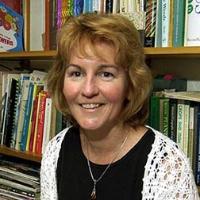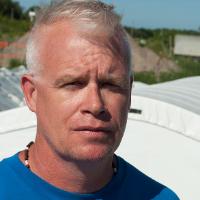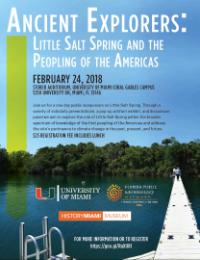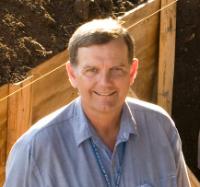 Dr. Lee Newsom, Flagler College, Emerita, Dept. of Anthropology, Pennsylvania State University
Dr. Lee Newsom, Flagler College, Emerita, Dept. of Anthropology, Pennsylvania State University
Paleobotanical Research at Little Salt Spring
Wood, seeds, gourds and other materials from nearly all temporal components have been recovered from Little Salt Spring. Data from the 27-meter ledge demonstrate the presence of a late Pleistocene wetland forest community that lacks any modern analogue, mirroring the extinct fauna from that period. Paleoindian and Archaic Period plant use is reflected in the wooden implements, including throwing sticks and atlatl shafts, as well as two types of gourd, among other economic plant species, from excavations in the spring basin. Radiocarbon dating and ancient DNA research confirm a very early presence of African bottle gourd at the site, lending support to one origin model positing oceanic drift as the dispersal vector for the fruits, which later became the basis of plant cultivation and reveal agricultural origins in eastern North America.
 Dr. Jason O’Donoughue, Bureau of Archaeological Research, Division of Historical Resources
Dr. Jason O’Donoughue, Bureau of Archaeological Research, Division of Historical Resources
The Past and Future of Florida’s Springs
Florida houses the largest concentration of artesian springs in the world, many of which are besieged by the impacts of development. Debate rages over how best to balance conservation, recreation, and sustainable groundwater use. Despite their abundance, relatively little is known about past human use of these places. Histories of springs typically emphasize their role as watering holes where game and freshwater could be obtained or as sacred pools where ritual was conducted. However, recent archaeological investigations at several springs in the state are casting new light on these interpretations. Drawing on examples from across Florida, I outline the environmental and cultural history of Florida’s springs and argue that archaeology can help us better understand contemporary threats to these places and enhance efforts to conserve and restore what Archie Carr called “the singular blessing of the Florida landscape.”
 Dr. Jessi Halligan, Florida State University
Dr. Jessi Halligan, Florida State University
A View from the Blackwater Aucilla: How Florida’s Underwater Paleoindian Sites Are Providing Insights into the First Americans
The Paleoindian record of Florida is a study in contrasts. Well-preserved paleoenvironmental data and numerous bone and ivory artifacts from freshwater submerged sites provide clues about the earliest inhabitants and their lifeways. Much of Florida’s Paleoindian record was submerged by sea level rise, so we know little about any early coastal adaptations while sites on land suffer from problems common to the Southeast: poor preservation and destruction from development. However a century of research has demonstrated that Florida’s underwater sites can provide important information about the first Floridians, the first people in the Southeast, and the first Americans.
 Dr. Andrew Hemmings, Aucilla Research Institute
Dr. Andrew Hemmings, Aucilla Research Institute
Recent Observations on Materials Collected from Little Salt Spring
A number of observations based on a recent examination of the geologic samples, faunal remains, and material culture from Little Salt Spring suggest clustering of data at specific points in the use of the site over time. Terminal Pleistocene and Middle Archaic evidence are discussed in detail. How Little Salt fits within a regional cultural framework is suggested and meaningful lines of future inquiry are also presented.




 Dr. Michael R. Waters, Director of the Center for the Study of First Americans, Texas A & M University
Dr. Michael R. Waters, Director of the Center for the Study of First Americans, Texas A & M University Dr. Lee Newsom, Flagler College, Emerita, Dept. of Anthropology, Pennsylvania State University
Dr. Lee Newsom, Flagler College, Emerita, Dept. of Anthropology, Pennsylvania State University Dr. Jason O’Donoughue, Bureau of Archaeological Research, Division of Historical Resources
Dr. Jason O’Donoughue, Bureau of Archaeological Research, Division of Historical Resources Dr. Jessi Halligan, Florida State University
Dr. Jessi Halligan, Florida State University Dr. Andrew Hemmings, Aucilla Research Institute
Dr. Andrew Hemmings, Aucilla Research Institute